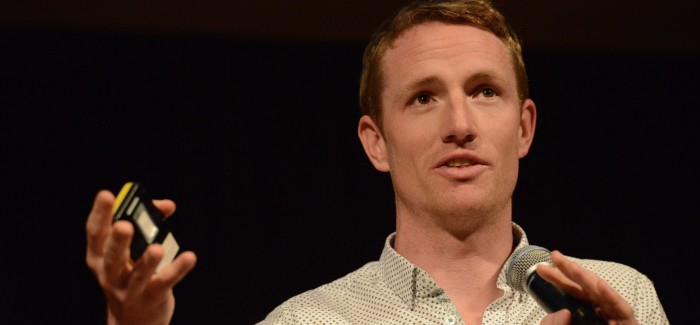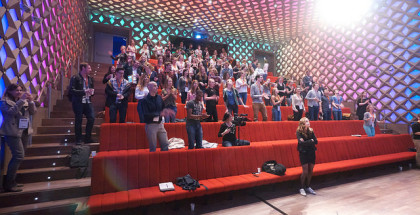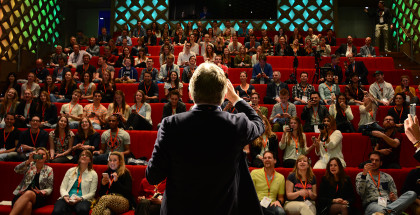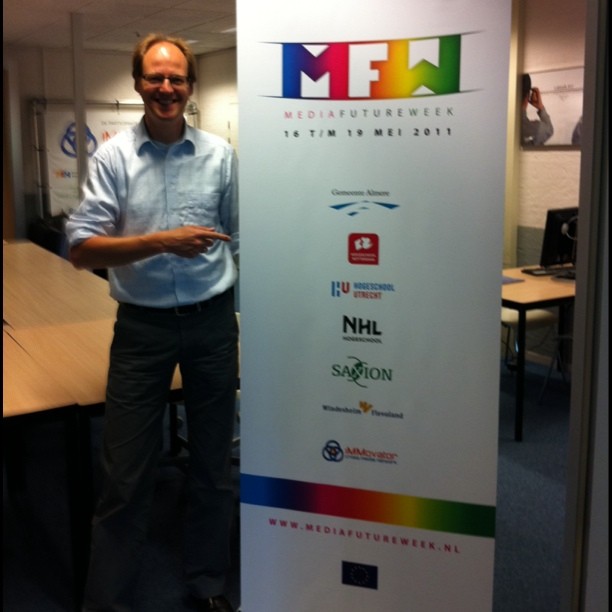Citizen vs consumer
Jon Alexander founded the ‘New Citizenship Project’ in 2014. He is fascinated by the shift in society in which we go from being ‘Consumers’, to being ‘Citizens’, and thereby participating more actively in society. The biggest difference between the two roles is the motivation behind why we do things the way we do them. He opened his speech with a quote from Albert Einstein:
‘If I had only one hour to save the world, I would spend fifty-five minutes defining the problem, and only five minutes finding the solution’. -Albert Einstein
How to build Citizen ideas: from selling products to building stories
How do we build ‘Citizen ideas’? Important here is the shift in how we think about ourselves, who we are and to what extent we want to participate in society. The best ideas are not about selling products but about building stories. The basis of the New Citizenship Project is the concept that society is changing. It is a story about evolution, who we are and how we think. To explore further how ‘Citizen ideas’ are built, Jon first talks about the shifting role of the individual in society, from ‘Subject’ to ‘Consumer’, and ‘Consumer’ to ‘Citizen’. In the beginning of the 20th century, we did what was expected of us, the right thing to do was to do our duty. We had rights and duties in the role as a ‘Subject’ but no active part in society. We did what we were told. In the 80’s our role changed to ‘Consumer’, we gained freedom of choice and the possibility to always go for the best option available.
“Consumer”: People who identify as it’s important to find brands that identify with their personality
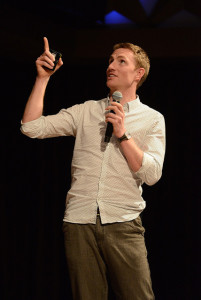 We currently see a shift from a ‘Consumer’ society to a ‘Citizen’ society. A ‘Citizen’ is someone who more actively contributes to society. ‘Citizens’ are more like designers, they are not limited to the available options, they can create themselves. There are several studies on these different roles. For example, a study of 3,000 participants who were subdivided on the basis of three questions in the categories ‘subjects’, ‘consumers’ and ‘citizens’. Participants were asked how involved and active they felt in their own community. The study revealed that the participants in the ‘subjects’ category felt less active and involved than the ‘citizens’.
We currently see a shift from a ‘Consumer’ society to a ‘Citizen’ society. A ‘Citizen’ is someone who more actively contributes to society. ‘Citizens’ are more like designers, they are not limited to the available options, they can create themselves. There are several studies on these different roles. For example, a study of 3,000 participants who were subdivided on the basis of three questions in the categories ‘subjects’, ‘consumers’ and ‘citizens’. Participants were asked how involved and active they felt in their own community. The study revealed that the participants in the ‘subjects’ category felt less active and involved than the ‘citizens’.
Monkeys demand equal pay for equal work
The Dutch researcher Frans de Waal carried out another good example of research into behavior. He did research on chimpanzee behavior to compare it with the behavior of people. In this experiment, Frans de Waal shows what happens when two chimpanzees are rewarded unequally. After performing a task, the chimpanzee on the left is rewarded with a piece of cucumber. When he sees that his neighbor is rewarded with a grape, he shows his disapproval by throwing the cucumber.
Citizen vs consumer
Media has a tremendous influence on our behavior. When television was the leading media we mainly consumed. With the arrival of the Internet, more opportunities for participation came about and the society changed from ‘Consumer’ to ‘Citizen’. But what does that eventually mean for our ideas? There are two things that characterize ‘Citizen ideas’: Social Purpose and Spread ability.
The ability to share an idea
A good example of how an idea spread worldwide and incited people to action is the ‘Ice Bucket Challenge’. What started as a YouTube video of a woman jumping into cold water, but before doing so, nominating her friends to do the same, lead to a global hype whereby 17 million videos were shared on Facebook. Just by simply adding some ‘rules’ and of course a good cause.
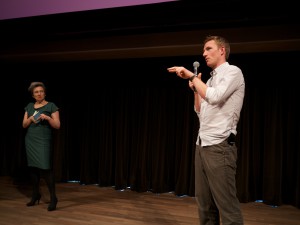 ‘Why some ideas survive and others die’
‘Why some ideas survive and others die’
According to Jon, ultimately it is not about the ideas that stick but about the ideas that we can spread. How do you go from selling a product to building a story? How do you ensure that your idea is shared with the rest of the world? Your idea must meet the following three requirements:
1. The idea should be actionable: you have to get active
2. The idea should be connected: you have to be able to share your idea within your social network
3. The idea should be extensible: make sure there are rules and structure
The advice that Jon would like to give everyone: Make the most of your ideas.
Jon Alexander @ MFW16 from iMMovator on Vimeo.

